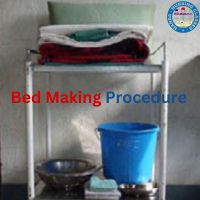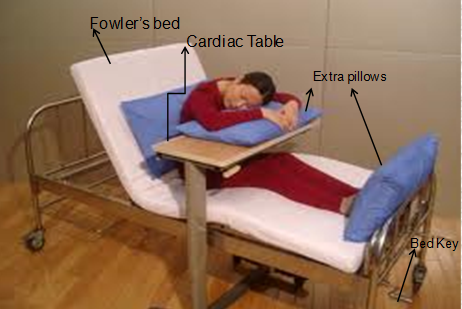Introduction
A lumbar puncture procedure (LP) is used to collect a sample of cerebrospinal fluid (CSF) for diagnostic testing. CSF is the fluid that surrounds the brain and spinal cord and helps to protect them from injury. Lumbar puncture procedure is also sometimes called a spinal tap. The lumbar puncture procedure is performed by inserting a needle into the lower back and withdrawing a small amount of CSF. Lumbar puncture procedure is generally safe and complications are rare. However, there is a small risk of headache and bleeding. Lumbar puncture procedure is used to diagnose a variety of conditions, including infections, inflammation, and tumors. It can also be used to measure the pressure inside the skull and to test for the presence of certain chemicals in the CSF.

Lumber Puncture purpose
What does a lumbar puncture test for? if you have that type of doubt in mind let us know the lumber puncture purpose. The lumbar puncture procedure purpose is used to diagnose various conditions that affect the brain and spinal cord. Possible causes for performing a lumbar puncture include:
- Infections of the brain or spinal cord, such as meningitis or encephalitis,
- Bleeding into the brain from trauma, aneurysms, or tumors
- Certain cancers, such as leukemia or lymphoma
- Certain inherited disorders, such as sickle cell anemia
- Certain autoimmune disorders, such as multiple sclerosis
- Certain metabolic disorders, such as guillain-barré syndrome
- Certain other neurological disorders, such as meningeal carcinomatosis
- It is also used to examine the pressure and chemical composition of the cerebrospinal fluid. A
- manometer is used to measure the pressure of the CSF. If pressure is more than the normal value, it performs to reduce intracranial pressure.
Further, a lumbar puncture procedure is performed to inject medicine directly into the spinal cord. These include:
- To administer spinal anesthesia before surgery.
- To administer medication into the spinal canal in case of meningitis.
- To perform diagnostic studies, e.g. Myelogram to detect subarachnoid block
- To treat cancer, chemotherapy drugs inserted through a lumbar puncture procedure
Lumbar Puncture Indications
- Diagnosis and management of central nervous system infections, such as meningitis and encephalitis.
- Evaluation of subarachnoid hemorrhage in patients with suspected bleeding into the brain.
- Assessment of intracranial pressure in conditions like hydrocephalus or idiopathic intracranial hypertension.
- Collection of cerebrospinal fluid (CSF) for analysis in cases of suspected inflammatory or autoimmune disorders, such as multiple sclerosis.
- Detection of malignant cells in the CSF for diagnosis and staging of certain cancers, like leukemia or lymphoma involving the central nervous system.
- Administration of medications, such as chemotherapy drugs or antibiotics, directly into the CSF for targeted treatment of specific conditions.
- Evaluation of neurodegenerative diseases, such as Alzheimer’s disease, through CSF biomarker analysis.
Lumbar puncture contraindications
There are several contraindications to performing a lumbar puncture, which includes the following:
- Inability to control bleeding- If your blood clotting factor (BT time) is disturbed the physician avoids for lumbar puncture procedure because the procedure involves inserting a needle into the spinal canal, which could potentially cause additional bleeding.
- Coagulopathy- Coagulopathy is a condition in which the blood’s ability to clot is impaired. This can lead to excessive bleeding or, conversely, an increased risk of clotting. Coagulopathy can be caused by a variety of factors, including liver disease, kidney disease, certain medications, and certain genetic disorders.
- Infection at the puncture site- Due to any caused Infection at the puncture site or iif localized infection or inflammation in the area is present, physicians also avoid lumbar puncture procedure.
- Severe hypertension- If your blood pressure is consistently above 140/90, you have hypertension. If it is consistently above 180/110, you have severe hypertension. There are a few reasons why a lumbar puncture (or “spinal tap”) might be contraindicated in a person with hypertension. First, the procedure involves inserting a needle into the spinal canal, which could potentially cause bleeding or other complications in a person with hypertension. Second, the increased pressure in the arteries can make it more difficult to obtain a clear sample of cerebrospinal fluid. Finally, the procedure can sometimes trigger a brief rise in blood pressure, which could be dangerous for a person with hypertension.
- Pregnancy – There are a few reasons why a physician might avoid performing a lumbar puncture procedure on a pregnant woman. First, the procedure can be uncomfortable and may cause some cramping. Additionally, it is possible to puncture the uterus during the procedure, which could result in miscarriages or preterm labor. Finally, the procedure carries a small risk of infection.
- Previous lumbar puncture – If Previous lumbar puncture with a failed attempt
How does the patient & health care officer prepare before the lumber puncture procedure?
For patient
When your doctor is advice for a lumber puncture procedure you think about several things like; result of procedure, pain during and after procedure, lumbar puncture procedure needle, treatment & medication after lumbar puncture procedure, diet, physical activity, and most important you worrying about lumber puncture procedure. At that time you must ask everything regarding lumber puncture procedure to your doctor & clear your doubt to fill tension free because it necessary to live healthy life. Before lumber puncture procedure health care officer explain & prepared for you to procedure it include several things:
- General instructions: Health care officer explains you all facts regarding procedure. Before the procedure, the patient will be asked to sign a consent form. Before procedure they tell to remove jewellery, denture or any accessorise you wear. They provide you procedure gown to wear.
- Diet: The night before the procedure health care officer will be given instructions to follow for restrictions on food and drink (NBM- nil by mouth). You will be asked not to eat or drink anything after midnight the night before the lumber puncture procedure.
- Medications: In the set of instruction health care officer teach about medication it include explain about anticoagulant medications and checking allergic reaction to such medications specially local anaesthetics.
For Health care officer
To prepare patient for lumbar puncture procedure health care officer should lots of important aspects kept in mind before the lumbar puncture procedure like:
- Identify the patient,
- Explain lumbar puncture procedure to patient & their family members,
- Prepare documentation: Taking sign on consent form, prepare OT profile, Collect all reports of patient,
- Prepare patient: remove jewellery, denture or any accessorise & provide surgical gown,
- Prepare Unit: Prepare patient bed, operation table, articles for lumbar puncture procedure, specimen containers for laboratories to investigation CSF.
Lumbar puncture procedure
A lumbar puncture (LP) is a diagnostic procedure that involves collecting a small sample of cerebrospinal fluid (CSF) via a needle inserted into the lower back. Here’s a look at the steps involved in this procedure.
- The person undergoing the LP will be asked to lie on their side with their knees pulled up toward their chest.
- A local anesthetic will be injected into the skin over the lower back to numb the area.
- Once the skin is numb, a needle will be inserted between the vertebrae (bones) of the lower back and into the spinal canal.
- CSF will be collected via the needle and sent to a lab for analysis.
- Once the needle is removed, a bandage will be placed over the injection site. The entire procedure usually takes less than 30 minutes.
Lumbar puncture procedure steps
Lumbar puncture procedure steps with rationale are as follows:
| Steps | Rational |
|---|---|
| Identify the patient and explain the procedure to him. | Relieves anxiety and fear. |
| Instruct the patient not to make any movement during the procedure. | Ensures that patient is comfortable. |
| Instruct the patient not to make any movement during the procedure. | Movement during the procedure causes injury to the spinal cord and its nerves. |
| Check the BP, pulse, and respiration of the patient. | Helps in obtaining baseline data. |
| Position the patient on one side at the edge of the bed, with the back towards the physician. Thighs and legs are flexed as much as possible (C-shaped position). The head and neck are flexed and brought towards the chest. Keep hands between knees. | Flexion of thighs and legs increases the space between vertebrae and facilitates easy entry of the needle into sub-arachnoid space. |
| Keep a pillow under the head. | The pillow under the head maintains the spine in a horizontal position. |
| Encourages the patient to relax and breathe normally during procedures. Remind the patient that he should not talk. | Hyperventilation may cause an error in pressure reading. |
| Fold back the upper garments above the waistline and the lower garments below the hip exposing the site. | Avoids over-exposure of the patient |
| Assist the physician in cleaning the puncture site with an antiseptic solution and injecting local anesthetics. | Prevents the risk of infection. |
| The spinal needle is inserted into the subarachnoid space by a physician through the 3rd and 4th or 4th and 5th lumbar intercostal space. | |
| The physician removes the stilette and connects three-way adaptor with a manometer filled with normal saline. | Obtains CSF pressure. Normal pressure is 6-13 mm of mercury or 80-180 cm of water. |
| Collect the CSF specimen into 3 specimen bottles after measuring pressure. | |
| The needle is withdrawn by a physician. | |
| Assist the physician in sealing the puncture site with tincture benzoin and apply sterile dressing. | The dressing protects and prevents leakage of CSF from the puncture site. |
| Instruct the patient to be flat for 12-24 hours. | Decreases CSF pressure in the caudal area where the needle insertion occurred and decreases the risk of leakage. |
| Monitor for complications of lumbar puncture. Check vital signs every half an hour for 3-4 hours till stable. | Post-lumbar headache may appear a few hours to several days after procedures. |
| Check puncture site frequently for CSF leakage. | |
| Encourages patient to take more fluids after the procedure. | Reduces the risk of post-lumbar headache by re-establishing the CSF volume. |
| Record the procedure with date, time, CSF pressure, the amount drawn, color, nature of CSF, and general condition of the patient during and after the procedure. | |
| Send the specimen to the laboratory with proper labels and requisition forms. | Detects chemical, bacteriological, and cellular composition of CSF and helps to diagnose the disease. |
| If no complications are observed, give the upright position to the patient after 24 hours. |
You must read: Ear Care Procedure
Special considerations for lumbar puncture procedure
👉Monitor for neurological changes such as change in the level of consciousness, pupil size, numbness and tingling or pain in the legs or lower back, during and after the procedure.
👉If spinal headache is present, instruct patient to
a. Increase fluid intake
b. Avoid aspirin and caffeine
c. Keep lights dim in the patient rooms
d. Avoid excessive stimulation.
e. Administration pain medications
f. Maintain flat position for 12-24 hours without pillow.
👉Once a needle enters subarachnoid space, help patients to slowly straighten legs to reduce false recording of increased intracranial pressure. Increased muscle tension and compression may elevate pressure recording.
👉If pressure reading is not required after introduction of the needle into the subarachnoid space, the CSF specimens is taken. In this case, the three way adapter and manometer tubing are not required.
👉Watch for patient’s colour, nausea, vomiting, headache etc.
Care of articles after lumber Puncture Procedure
- Take the equipment to the utility room.
- Clean the needles by running cold water through them. Dry and replace yields
- Clean and dry the other equipment.
- Send the tray for autoclaving.
Lumber puncture Complications
Lumbar puncture complications are rare but there are a few complications to having a lumbar puncture, which your doctor will explain you before the procedure. These include:
- Headache in approximately 10% of patient’s headache occurs. The headache is worse when the patient is upright and improves when the patient is lying down. In some patients headache due to leakage of puncture site and that type of headache is relieved by performing a blood patch. In the elderly fever may occur.
- Intracranial bleeding- There is a risk of bleeding into the brain when the needle is inserted into the interspace between L3 and L4. This can be minimized by using a small-gauge needle and performing the procedure in an elderly patient in the sitting position.
- Chronic backache- If history of spinal surgery or low immunity
- Epidural infections- An active epidural infection may be in the area where the needle will be inserted
- Neurotic problems- Severe psychiatric or neurotic problems due to nerve damage while lumbar puncture procedure
Some other risks factors may depend on your specific medical condition. Be sure to discuss all concerns with your doctor before the lumbar puncture procedure. Here are some of the more common complications associated with the lumbar puncture procedure:
- Spinal fluid rhinorrhea (CSF leaking through the nose)
- Spinal fluid otorrhea (CSF leaking through the ear)
- Intracranial hemorrhage (rare)
- Infections
- Nerve injury
- Arachnoiditis (inflammation of the arachnoid mater surrounding the spinal cord) Epidural hematoma (blood clot in the space around the dura mater
- surrounding the spinal cord)
- Dysesthesia (pain, numbness, tingling)
- Urinary retention
- Pain near the puncture site
- Lumbar puncture site infection (rare)
- Spinal cord injury (rare)
- Pneumocephalus (air in the brain)
Lumber puncture procedure summary
A lumbar puncture (LP) is a medical procedure in which a needle is inserted into the spinal canal in the lower back. This procedure is also known as a spinal tap. The main purpose of an LP is to collect a sample of cerebrospinal fluid (CSF). This fluid surrounds the brain and spinal cord and helps protect them from injury. CSF also provides nutrients and removes waste products from the brain. It is often used to diagnose conditions such as meningitis, encephalitis, and certain types of cancer. An LP is generally a safe and well-tolerated procedure. The most common complication is a headache, which can be treated with over-the-counter pain relievers. If you are scheduled to have an LP, be sure to ask your doctor any questions you may have about the procedure.
Lumbar puncture procedure nursing responsibilities
Before the procedure, explain the procedure to the patient and obtain informed consent. Assess the patient’s level of anxiety. If necessary, administer a sedative prior to the procedure. Auscultate the chest and lungs to ensure that the patient is not having any respiratory problems. Perform a physical assessment of the patient, including a neurological assessment. Position the patient for the procedure and perform the procedure in a clean and aseptic manner. After the procedure, monitor the patient’s vital signs and urine output. Assess the patient for any complications.
FAQs
FAQs stands for “Frequently Asked Questions.” It refers to a list of common questions and their answers, often used to provide information and address common queries about the Puncture Procedure topic.
What does a lumbar puncture test for?
A lumbar puncture test, also called a spinal tap, is used to collect cerebrospinal fluid (CSF) for testing. CSF is the clear fluid that surrounds the brain and spinal cord. A lumbar puncture is usually done to diagnose problems with the brain or spinal cord, such as infections, bleeding, or tumors.
What is a lumbar puncture and why is it performed?
A lumbar puncture, also called a spinal tap, is a procedure used to collect cerebrospinal fluid (CSF) for testing. CSF is the clear, watery fluid that surrounds the brain and spinal cord. A lumbar puncture is performed by inserting a needle into the lower back to collect a small amount of CSF. CSF testing is used to diagnose a variety of conditions, including infections, inflammations, bleeding, and tumors. CSF testing can also be used to measure the pressure inside the skull and to check for certain proteins that may be indicative of disease.
Is a lumbar puncture painful?
A lumbar puncture may be associated with some degree of pain. The level of discomfort depends on the individual and may range from mild to severe.
Is a lumbar puncture a serious procedure?
Lumbar punctures are generally considered safe procedures. Complications are rare, but can include headaches, low back pain, and bleeding around the spine.
A client with meningitis is being prepared for a lumbar puncture. in which position should the nurse place the client for this procedure?
For a lumbar puncture, the client is typically placed in the lateral recumbent (or lateral decubitus) position, which means lying on one side with knees flexed up towards the chest. This position helps to open up the spaces between the vertebrae in the lower back, making it easier and safer for the healthcare provider to perform the lumbar puncture. It also helps the client to remain still during the procedure.
How long are you on bed rest after a lumbar puncture?
There is no bed rest after a lumbar puncture.
How long do lumbar puncture results take?
Lumbar puncture results take about one to two hours.
What is a normal lumbar puncture reading?
The normal values for opening pressure are: Adults: 70-180 mm H2O. Children: 40-160 mm H2O. Infants: 20-80 mm H2O.
Can you walk after a lumbar puncture?
You may have some back pain after the test. You may be asked to stay lying down for a short time. You can usually go home within an hour of the test.
Does lumbar puncture hurt?
Lumbar puncture is usually not painful. You may feel pressure during the procedure. A lumbar puncture is done with you lying on your side.
What is normal lumbar puncture CSF pressure?
For infants and children, the normal opening pressure is between 5 and 20 cm of fluid. For adults, the normal opening pressure is between 8 and 25 cm of fluid.
What should you not do after a lumbar puncture?
After the Procedure It is important for you to stay lying down for at least 4 to 6 hours after the procedure. … You should not drink alcohol or take drugs for at least 24 hours after the procedure. … If you received a local anesthetic during the procedure, do not drive for at least 24 hours.More items…
What can I eat after a lumbar puncture?
You may eat normally after the procedure. You may also feel drowsy, and it is best not to drive or operate machinery for the rest of the day. If you have had a general anaesthetic, you should not drive, operate machinery or drink alcohol for 24 hours.
What medications are injected into the spine?
Spinal injection procedures may be used to deliver: Corticosteroids. These are powerful anti-inflammatory drugs that are used to relieve pain and swelling. Local anesthetics.
What is injected during lumbar puncture?
A lumbar puncture is a procedure where a needle is inserted into the lower back. This can be done to withdraw a sample of cerebrospinal fluid (CSF) for testing, or to inject medication into the CSF.
Can a lumbar puncture be harmful?
A lumbar puncture can be dangerous if it is done incorrectly. It can cause severe headaches or nerve damage.
Why do you lie flat after a lumbar puncture?
After the test, the needle is removed. You will have to stay lying down for about 30 minutes. This is to help avoid having a headache after the procedure. Your doctor or nurse will tell you how to sit or lie down to help prevent this.
If you have any queries Feel free to ask any Queries in the comment section 👇and share them with your pear groups



